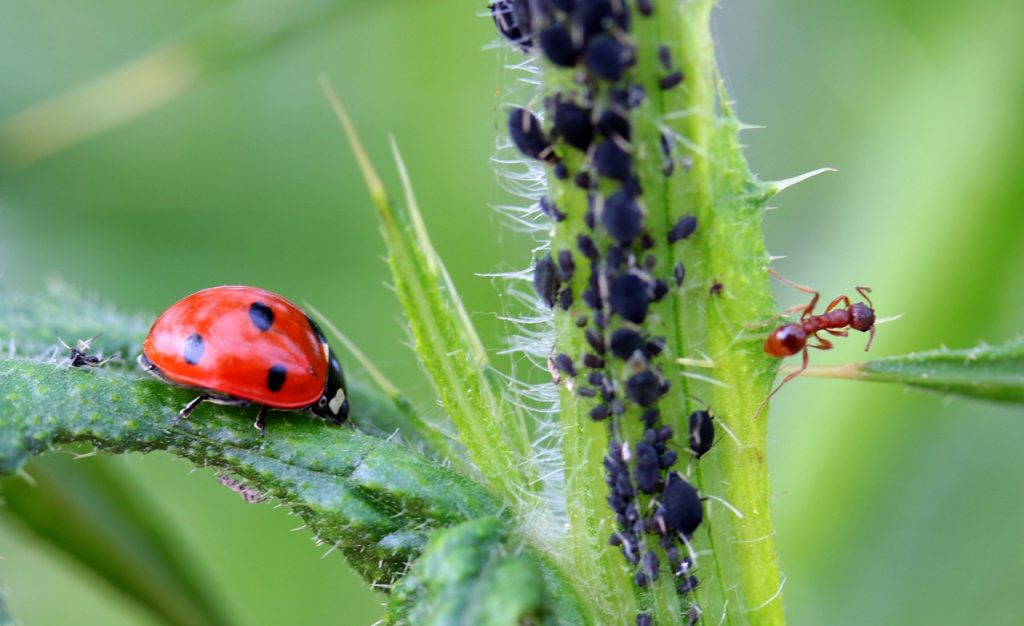Sponsored article
Bitten cabbage and other vegetables is a sight that makes us angry for good reason. During the season we can wage a constant battle with pests, using a variety of measures. Applying these remedies separately may not have enough effect, so try to apply the following advice at the same time.
In addition to using the following natural remedies, you can bring out the heavy guns against pests and use chemicals, which are available at the store Green Protection.
Preventing pests in your garden can also come from increasing the diversity of your vegetable bed. By planting a variety of vegetable crops – as well as flowering herbs and annuals – among each other, it can be harder for pests to locate host plants. Instead of planting a single crop in a row or block, mix things up so that even small monocultures don’t end up in the garden. Although much research is still being done on the exact effects of intercropping, this technique seems to “confuse” the pest. To locate and confirm that a plant is a suitable host, some pests will need to land on the plant a certain number of times. When plants are replanted, the pest may land on a different species each time, making it harder for the insect to find food.
Plants have an immune system (one that differs from ours, of course), and when plants are healthy and not stressed, they are naturally less attractive to pests. In addition, healthy plants have a whole host of tricks to repel insects with their own chemical defense system. The healthier your plants are, the better they can fight off pests on their own. Feed them by providing the soil with healthy organic matter food and make sure they are planted in conditions where they will thrive (sunny plants in the sun, plants in the shade, etc.). Growing happy, healthy plants is one of the easiest steps to preventing pests in your garden.
While pollinators are great to keep in the garden, the beneficial insects in question here are the ones that literally bite pests. Ladybugs, goldfinches, orioles, parasitic wasps, gophers and other beneficial species naturally help reduce pest numbers by eating them for dinner or using them to store and feed developing young. To attract these good insects to your garden, you must provide them with protein-rich pest insects to eat as prey, as well as carbohydrate-rich nectar. But not every flower will serve as a nectar source for beneficial insects. They need a special kind of floral architecture from which to obtain it. The more you have around beneficial solutions related to controlling pest populations, the less likely their numbers will get out of control. It’s all about creating a good balance

Some plants and plant varieties are more susceptible to pest problems than others. Preventing pests in the garden is sometimes as simple as choosing pest-resistant vegetables. For example, if cucurbit insects constantly plague your winter squash plants, ‘Butternut’ and ‘Royal Acorn’ are two of the most resistant varieties. Or, if potato beetles are always trying to strip your potato leaves, plant ‘King Harry’ potato (a variety bred at Cornell University), which has very hairy leaves that the beetles will not eat. Also look for varieties of other vegetables that are resistant to pests and diseases.
One of the most useful methods of preventing pests in the garden is to place a physical barrier between the plant and the insect. Cover susceptible plants with lightweight fabric that rests on the plants or on wires. Make sure there is plenty of slack in the cover and pin the sides to the ground so insects don’t crawl under the edges. Use a row cover to protect your plants from caterpillars, which will readily take up cabbage, broccoli and kale. Also cover young beans, cucumbers and pumpkins to deter beetles and marmots. Just remember to remove the row cover when the plants bloom to allow pollinators access.